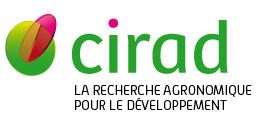Combining size fractionation, scanning electron microscopy, and X-ray absorption spectroscopy to probe zinc speciation in pig slurry
Legros S., Doelsch E., Masion A., Rose J., Borschneck D., Proux O., Hazemann J.L., Saint Macary H., Bottero J.Y.. 2010. Journal of Environmental Quality, 39 (1) : p. 531-540.
DOI: 10.2134/jeq2009.0096
Zinc occurs in high quantity in pig slurry since it is used as an essential micronutrient at high concentrations in animal feeds despite the low Zn assimilation by pigs. Zinc accumulation was measured in soil surface layers that had been amended with pig slurry, while also determining the phytotoxicity as well as the extent of groundwater quality degradation. To accurately predict the mobility and bioavailability of Zn derived from pig slurry spreading, the speciation of this element has to be assessed since the total concentration is not sufficient. This study involved a combination of techniques to investigate Zn speciation in pig slurry. Size fractionation was first performed to account for the complexity of pig slurry, and 75% of total Zn was detected in the 0.45- to 20-ôçm particle-size range. Then X-ray diffraction, scanning electron microscopy, coupled with energy dispersive spectrometer, and extended X-ray absorption fine structure analyses were combined to assess Zn speciation. The findings highlighted the presence of 49% Zn bound to organic matter, 37% amorphous Zn hydroxides [Zn(OH)2], and 14% sphalerite (ZnS).
Mots-clûˋs : lisier; porcin; technique analytique; microscopie ûˋlectronique; spectroscopie aux rayons x
Documents associûˋs
Article (a-revue û facteur d'impact)
Agents Cirad, auteurs de cette publication :
- Doelsch Emmanuel — Persyst / UPR Recyclage et risque
- Legros Samuel — Persyst / UPR Recyclage et risque
